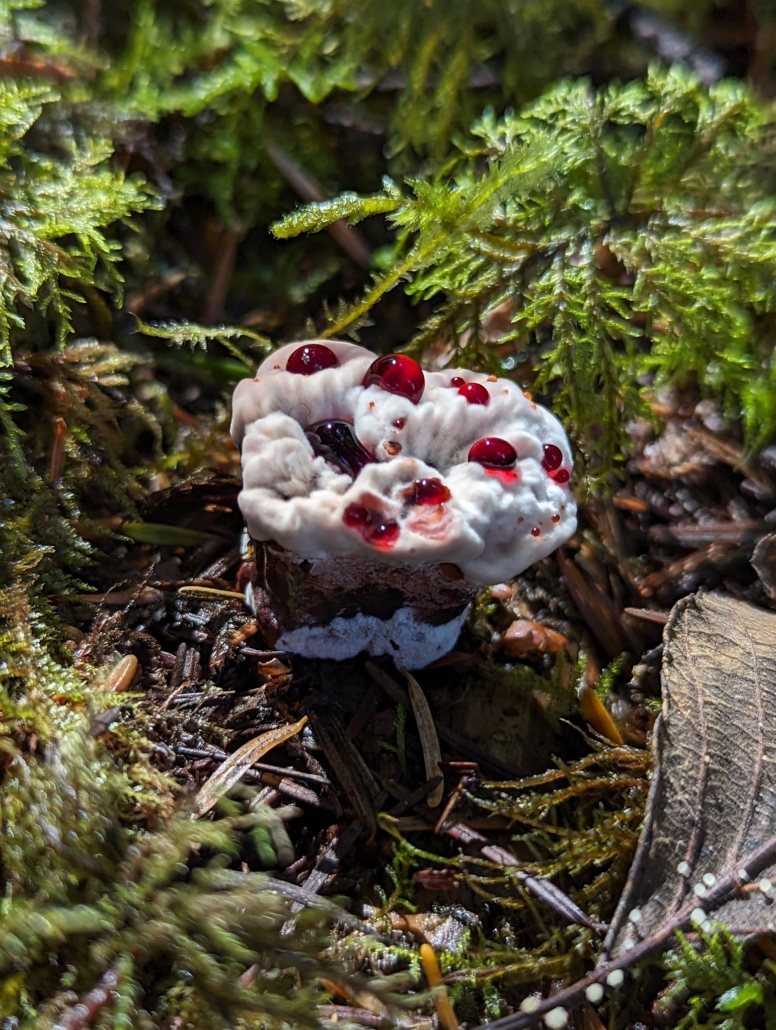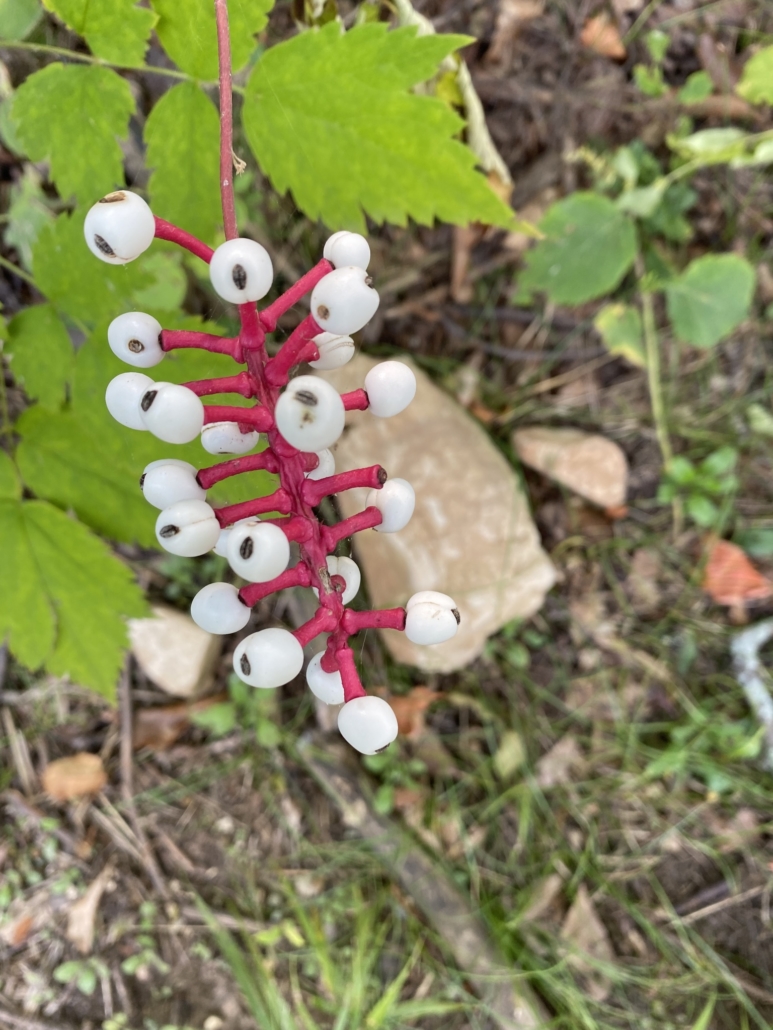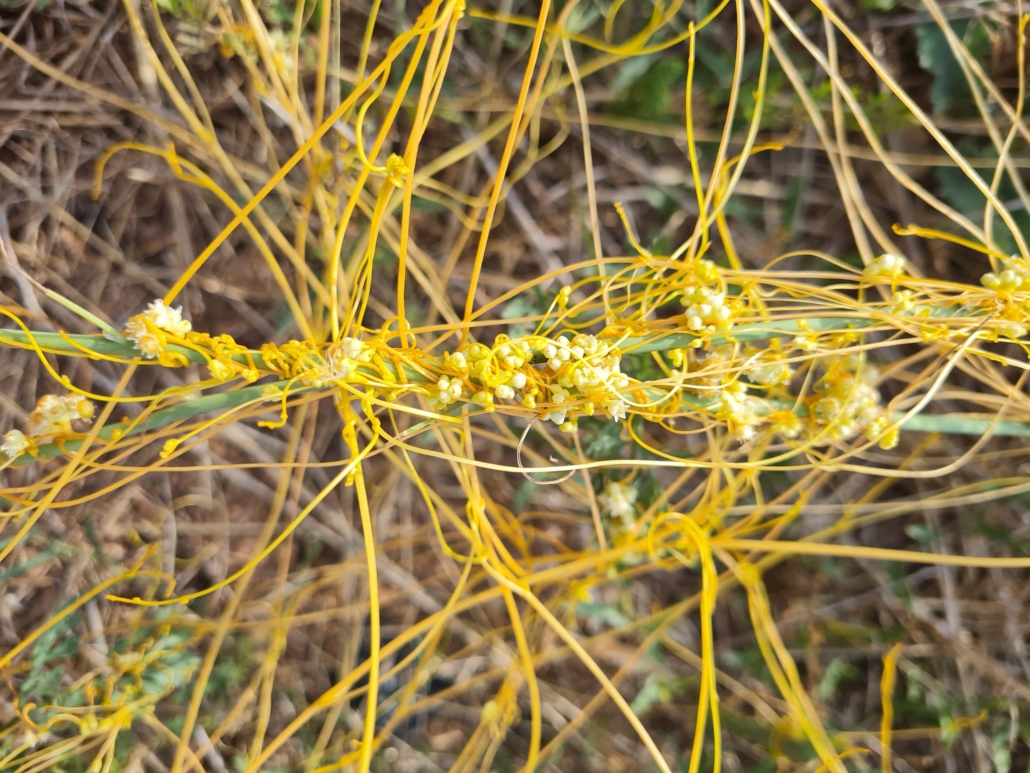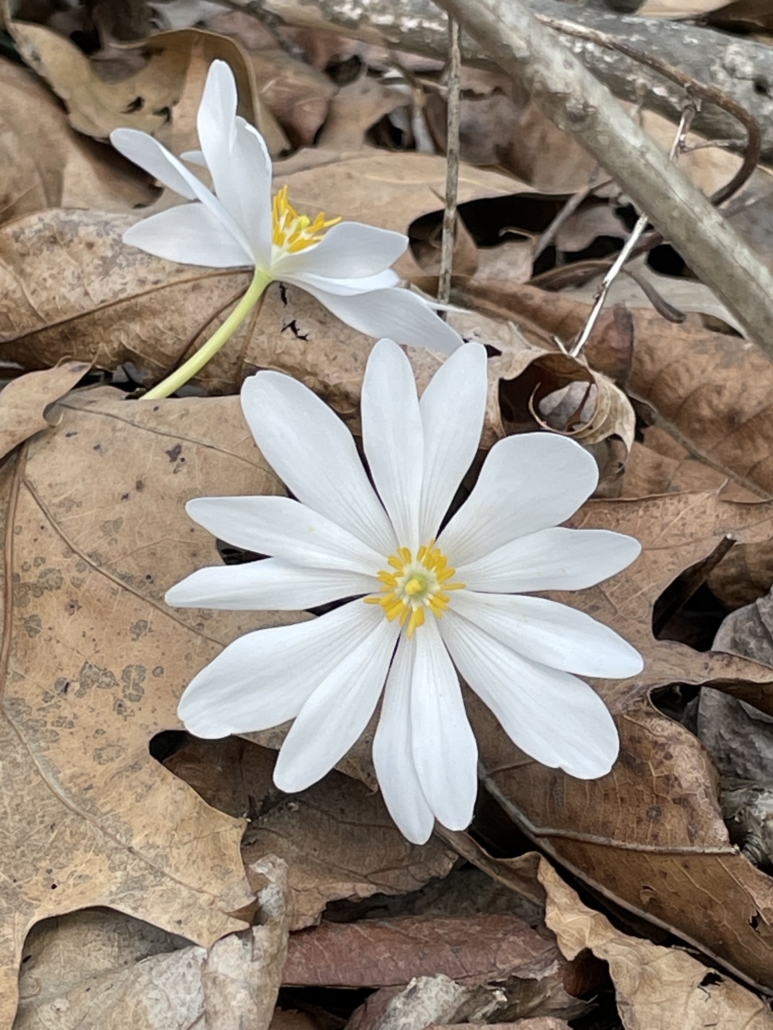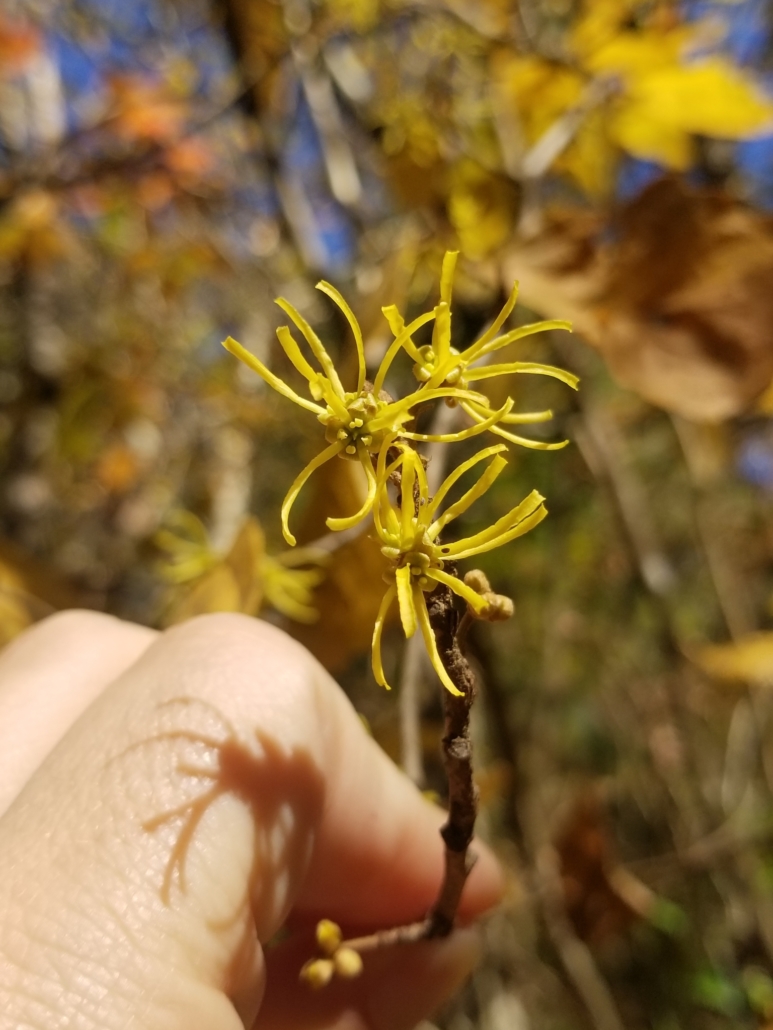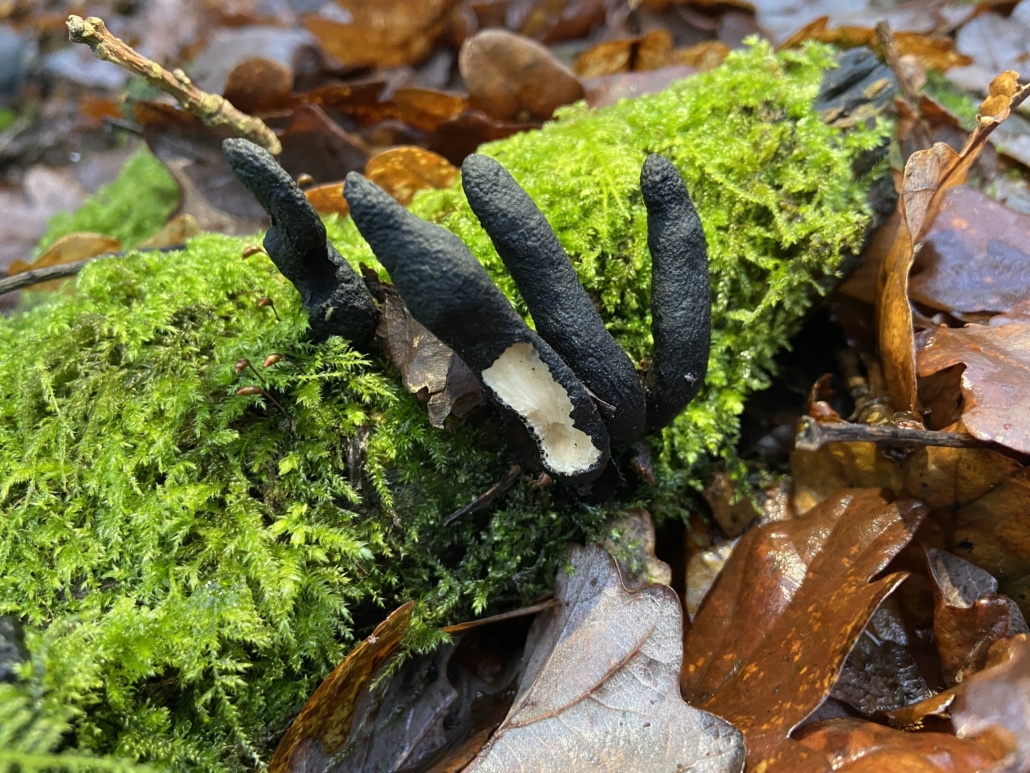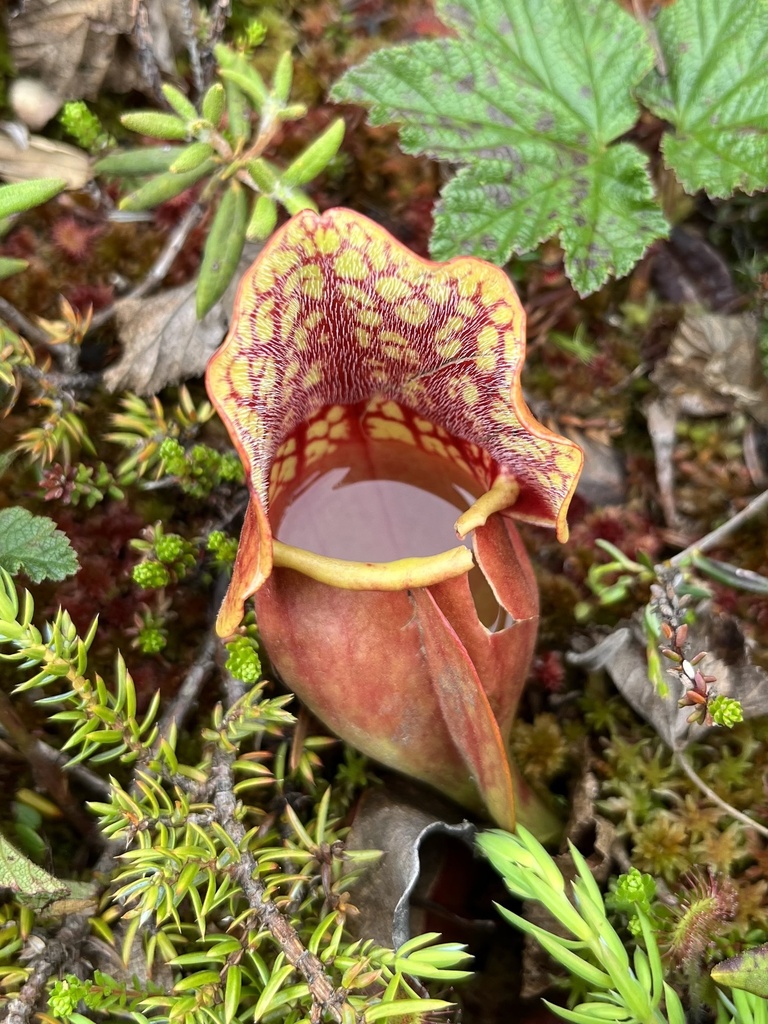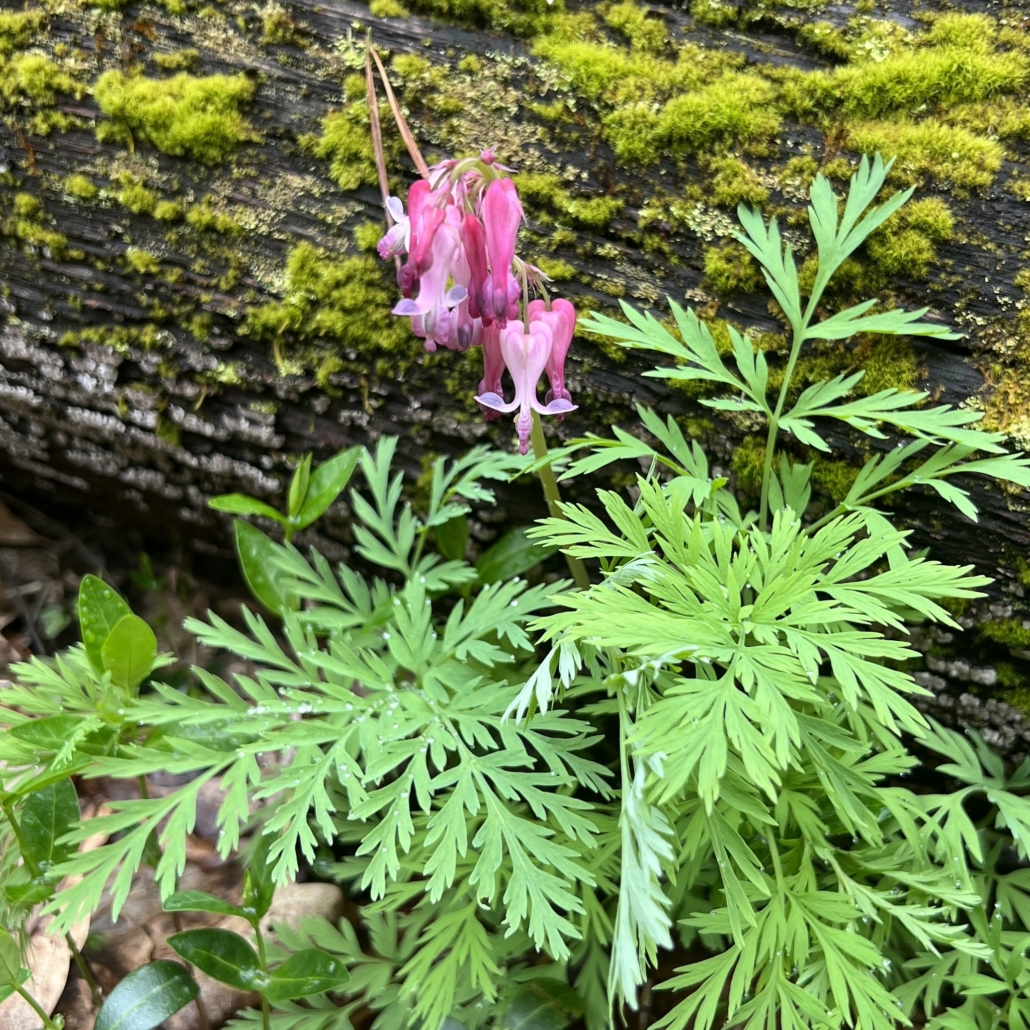Spooky Native Plants (and Fungi)
It’s almost Halloween, so here are ten native plants (and fungi) with spooky names, stories, or associations to get you in the holiday spirit!
Bleeding Tooth mushroom (Hydnellum peckii)
Also called: strawberries and cream, Devil’s tooth, red-juice tooth fungus.
It isn’t clear how or why these young mushrooms “bleed” but it’s thought that if the fungus has to grow quickly then it has to expel extra water, which results in the “blood.” They can be found in the Appalachian mountains in our area, though they are widespread across the country and more common in the Pacific Northwest.
Doll’s Eyes (Actaea pachypoda)
Also known as White Baneberry. This herbaceous perennial is toxic to humans but its pollen is valuable for short-tongued bees and birds love the berries!
Ghost Pipe (Monotropa uniflora)
Ghost Pipe is a wildflower disguised as a mushroom. Its phantasmal appearance is due to its lack of chlorophyll. Instead of using photosynthesis, Ghost Pipe (and other saprophytes) tap into the root systems of nearby trees via mycorrhizal fungi to obtain nutrients
Dodder (genus Cuscuta)
Also called: Strangleweed, Witch’s Hair, Devil’s Guts
There are more than 200 species of dodder found across the world. These parasitic vines don’t have roots or leaves once they mature, so seedlings have to rush to find a host plant. They tap into a host’s vascular system for all their needs. Some species are host specialists, but others can cross a wide range of hosts, making them difficult to control.
Bloodroot (Sanguinaria canadensis)
Bloodroot is one of our favorite spring ephemerals. It’s named for the red sap that comes from all parts of the plant (but especially the roots), which has historically been used as a dye as well as insect repellent. Bloodroot also depends on an interesting partnership for seed dispersal: the seeds have an elaiosome (a fleshy structure attached to the seed) that are attractive to ants. Ants carry the seeds to their nest, eat the elaiosome, then dispose of the seeds!
Common Witch-Hazel (Hamamelis virginiana)
Also known as American witch-hazel, this native shrub is best known for its unique flowers, which are present through the fall and sometimes into winter! It has had a wide range of medicinal uses throughout history and can still be found on the ingredient list for cosmetic products. The common name might come from the tradition of using witch-hazel branches as divining rods when looking for underground water sources.
Dead Man’s Fingers (Xylaria polymorpha)
Dead man’s fingers is a saprobic fungus and is usually found on or near the stumps of dead trees, which they use for nutrients. The name comes from the appearance of the mature “fingers” but this mushroom actually starts out as a light blue and fades to a shriveled dark brown by the end of its above-ground lifespan.
Purple Pitcher Plant (Sarracenia purpurea)
Did you know that Virginia has native carnivorous plants? The purple pitcher plant is one of them! The pitchers fill up with rainwater and attract insects. Once insects enter the pitcher they can’t get out and they’re slowly broken down by the plant’s digestive enzymes. Despite that, purple pitcher plants are also host plants for a species of mosquito larvae (Wyeomyia smithii) and one species of midge (Metriocnemus knabi).
Bleeding Heart (Dicentra eximia)
Also called: Fringed Bleedinghearts, Wild Bleedingheart
The common name for this native perennial comes from the heart-shaped flower and the dangling inner petals that suggest a drop of blood. It attracts hummingbirds and bees, including native long-tongued bees! Despite its delicate appearance, bleeding heart is fairly hardy and can bloom from the first warmth of spring to the first frosts of fall.
Devil’s Walking Stick (Aralia spinosa)
Also called: Hercules Club, Prickly Elder, Prickly Ash
This perennial tree is full of intrigue. It’s armed with prickles when it’s young enough to be at grazing height for herbivores, but some scientists theorize that since deer don’t seem to show much interest in devil’s walking stick anyways, that the prickles were evolved to protect the plant against larger herbivores like bison or elk!


